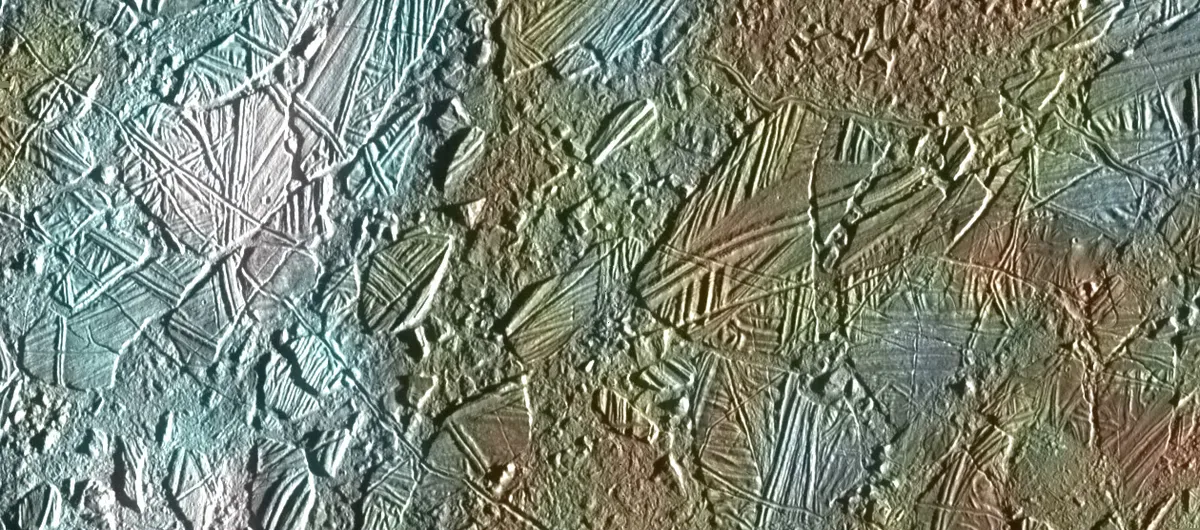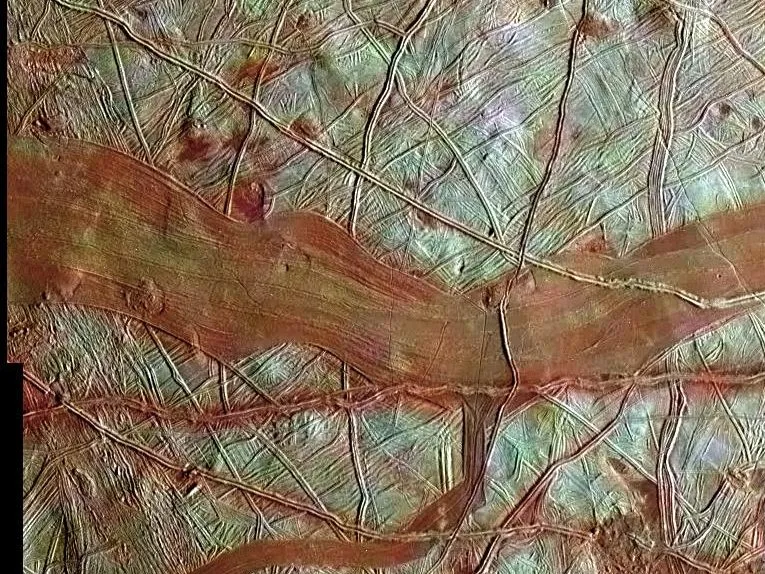Europa is a very dynamic and fascinating moon. Its surface is only between 40 to 90 million years old (as determined by crater counts), which indicates that it is constantly renewing its face.
The Europan surface is absolutely smothered with landforms that suggest ongoing geological processes: long ridges, large regions of broken-up ‘chaotic’ terrain, and smaller areas of uplift and circular pits.
It’s also clear that underneath its hard-frozen surface Europa harbours a deep ocean of liquid water.
But one of the biggest mysteries surrounding Europa is just how thick that shell of ice really is.
And solving this is crucial to understanding the moon’s internal structure, its geological history and even the chances its hidden ocean offers a habitat for extraterrestrial marine life.
- Read more about Jupiter's Galilean moons

There’s a huge ongoing debate within the planetary science community, split between the thin and thick icers.
Is Europa's icy shell thin enough that the ocean below can occasionally melt all the way through and break up the surface to create the observed chaotic regions?
Or is the ice layer pretty thick, with the landforms instead being created by solid-state convection within the moon’s shell?
Thick icers say blobs of relatively warm ice rise buoyantly to deform the surface.

The problem is that different scientists can look at the same images of surface features on Europa – mostly taken by the Galileo probe in the late 1990s – and come to completely opposing conclusions.
Kelsi Singer at the Southwest Research Institute, Boulder, Colorado, and her colleagues have taken a fresh look at the conundrum.
They mapped all the roughly circular features, between 1km and 50km in size, visible in the available imagery of Europa that could plausibly have been created by internal geological processes.
They were also able to make use of new topographic datasets on details of the landscape, such as the gradient and height or depth of features.

What lies beneath Europa's crust?
What they found when analysing their data on the size-distribution for all the identified pits, uplifts and small chaotic regions is that there is a peak at around 5km-6km in diameter.
Features smaller or larger than this are found to be less and less common. In fact, Singer and her team weren’t able to find any pits at all that were smaller than 3.3km in diameter, even in the highest-resolution images.
This size-distribution, they say, goes against what you would expect to find if the Europan ice shell were thin enough for melt-through events to occur.

So Singer concludes that their analysis supports the interpretation that the surface features are produced by rising warm ice, and therefore that the Europan ice shell is likely thick rather than thin.
They calculate that the ice shell must have been at a minimum 3km to 8km thick when these surface features formed.
But all of this is still just best-guess inferences on the thickness of Europa’s ice shell.
The good news is that the high-resolution imaging and, in particular, ground-penetrating radar measurements promised by future missions such as ESA’s JUICE (JUpiter and ICy moons Explorer) or NASA’s Europa Clipper may soon be able to settle this debate once and for all.
Lewis Dartnell was reading Pits, Uplifts and Small Chaos Features on Europa: Morphologic and Morphometric Evidence for Intrusive Upwelling and Lower Limits to Ice Shell Thickness by Kelsi N Singer et al. Read it online at arxiv.org.

